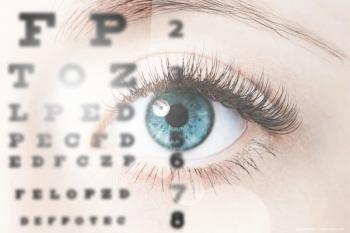
IKA 2024: Keratoconus patients in cataract surgery
Elizabeth Yeu, MD, Executive Board Member of IKA, and a cataract and refractive surgeon at Virginia Eye Consultants, talked about perioperative considerations for cataract surgery in keratoconus patients.
Elizabeth Yeu, MD, Executive Board Member of IKA, and a cataract and refractive surgeon at Virginia Eye Consultants, talked about perioperative considerations for cataract surgery in keratoconus patients.
Video Transcript:
Editor's note: The below transcript has been lightly edited for clarity.
Elizabeth Yeu, MD:
My name is Elizabeth Yeu. I'm a cornea, cataract and refractive surgeon at Virginia Eye Consultants. And we have had a wonderful time here at the second annual International Keratoconus Academy annual meeting. With that we've had some excellent discussions surrounding the perioperative considerations for cataract surgery in our keratoconus patient. So as we know, the cornea naturally will crosslink over time with age, just as any part that has collagen, like our joints. But not all the corneas that we see are naturally cross-linking, especially if patients are eye rubbers. So that is something that we do take into consideration depending on if they are patients that are ours to begin with, or if it's a first-time referral. So when we do evaluate these patients, these are very important historical pieces of information that we need to gather. If their vision is correctable in spectacles versus contact lenses, and what type of contact lenses, and of course, their goals. If they're looking for uncorrected vision, etc.
Diagnostically, we know that these are some of the toughest patients in terms of reading and getting consistent values. And it is a great thing if we can get their manifest refraction to have at least meridian alignment with what we see from their different diagnostic values. For example, their advanced optical biometry and their topographic values with their tomography. So if their meridian at their manifest and in their spectacles is at 110 degrees, and we see that it is traveling, even if a little irregular, but at about 110 degrees. That also helps us know that at least there is alignment there versus totally irregular astigmatism.
And finally, it also is helpful to know if they were able to achieve some level of decent spectacle corrective vision in soft contact lenses and glasses, versus if they were completely dependent on using scleral lenses. That also tells a different story in terms of the diagnostic pathway of what we would do at the time of cataract surgery. And sometimes doing a contact lens over refraction can be also very helpful in determining what part is cornea and what part is a cataract. Particularly if this is a new patient to us. With that being said, we know that eyes that are steep have a lot of negative spherical aberration. And so it's helpful for us to either use a zero sphericity IOL. And if possible, if they were able to achieve good correctable vision at some point or decent correctable vision, we can use a zero sphericity toric IOL in order to help them achieve some level of uncorrected vision. Otherwise, using a monofocal with zero sphericity in it is probably going to be a great way to go. Or you can even use a positive aspheric IOL monofocal in order to help neutralize what is going on into the cornea. And obviously there's also the light adjustable lens as a monofocal that can be helpful. And then now in this whole new class of small aperture IOLs, if they have a normal macula, and they are good, otherwise they're not too dry. This is a great new off label indication where small aperture IOLs have helped us to actually open the possibility. I have had some of the happiest patients who start with poor uncorrected vision and are able to have this great extended depth of focus, even if they have more than one and a half diopters of astigmatism to start with because the small aperture still provides the ability to actually block out the peripheral irregular coma rays.
So with that being said, you know, it is so great that we do have more understanding that there are great IOL formulas like the Barrett True-K for keratoconus and the Kane for keratoconus and these different breadth of lenses and we are taking this into consideration for our keratoconus patients in cataract surgery.
Newsletter
Don’t miss out—get Ophthalmology Times updates on the latest clinical advancements and expert interviews, straight to your inbox.















































.png)


